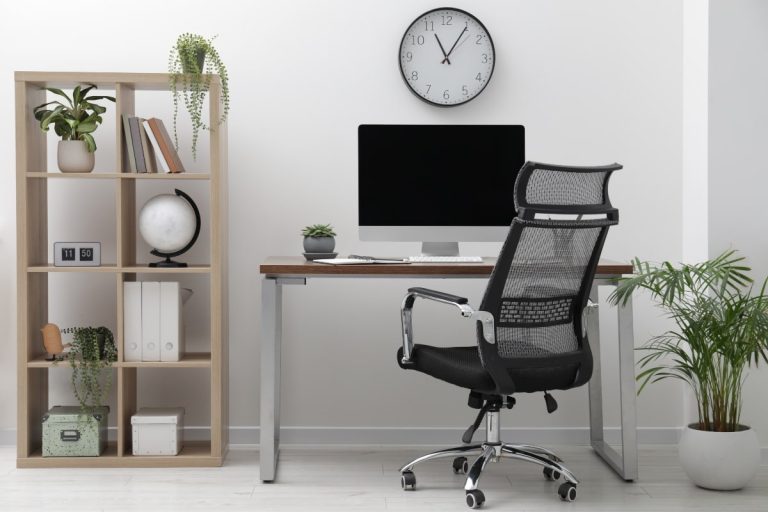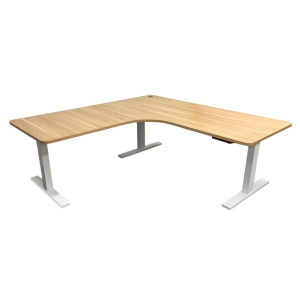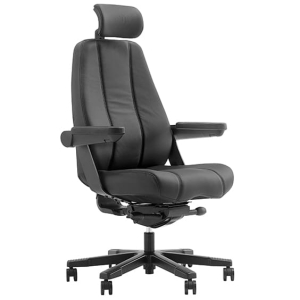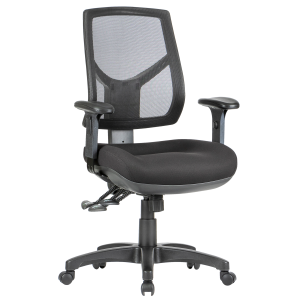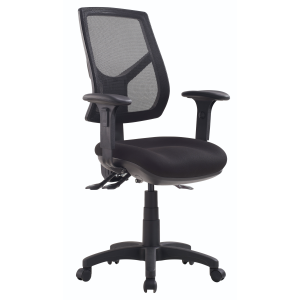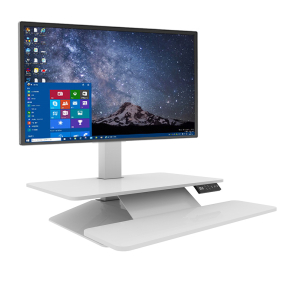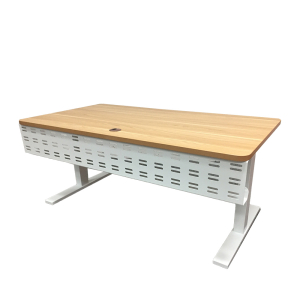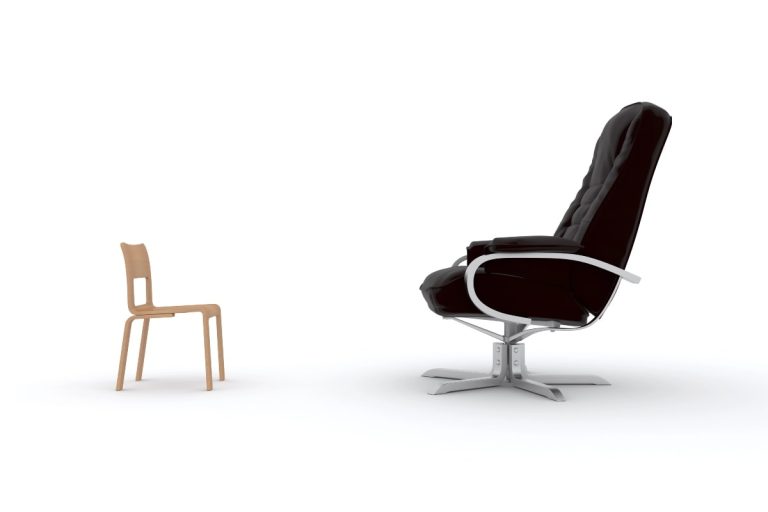Let’s face it: the type of office chair you use can affect your productivity. A good chair not only ensures easy access but also guarantees comfort. Studies show that finding the right seating option can make you more productive. In this article, we’ll discuss the benefits of investing in drafting chairs and compare them to other office chairs.
What are drafting chairs?
What is a drafting chair used for? How can it help you work on elevated surfaces more comfortably? And more importantly, how do you identify the perfect drafting chair for you?
A drafting stool or chair is an ergonomic office chair for raised workstations.
Initially, these chairs only had a few basic adjustments like increased heights and adjustable foot supports for added comfort. However, they have continuously evolved over the last few decades to incorporate more ergonomic features. Today, most of them have lumbar support, upholstery, adjustable heights, and caster wheels for easy mobility.
Why are drafting chairs used?
Drafting chairs are used primarily because they are compatible with elevated workstations like drafting tables. These workstations are commonly found in the engineering, art, architecture and design industries, where precision work at a higher vantage point is essential.
Standard office chairs do not offer the height adjustment necessary for these settings, which is where drafting chairs come into play. With their extended height range, ergonomic drafting chairs allow users to align perfectly with their work surface, ensuring optimal posture and reduced strain on the body.
A drafting chair is a must-have for creative professionals
For those who spend long hours at a drafting table, having the right chair can make all the difference in their work quality and overall well-being. High-quality drafting chairs provide the height, comfort, and support needed to work effectively in elevated positions.
As more industries recognise the importance of ergonomics, a good drafting chair is becoming an essential tool in the modern workspace.
Drafting chair vs office chair
Some of the primary differences between drafting chairs and regular office chairs include:
Extra height adjustability
Drafting chairs are typically more adjustable than regular office chairs. While office chairs generally only adjust from around 470-610 mm, a drafting chair can extend from 640-890 mm. Some drafting chairs even feature additional adjustability settings like tilt mechanisms and seat depth adjustment.
Enhanced ergonomic support
Like standard office chairs, drafting stools have ergonomic features like headrests, lumbar support, and seat adjustability. Standard office chairs mainly focus on delivering comfort within the standard desk range, while drafting chairs incorporate more adjustments, such as footings or footrests, to accommodate adjustable desk heights.
Designed for specific tasks and environments
Unlike typical ergonomic office chairs for standard work environments with standard desk heights, drafting or adjustable stools are customised for elevated work surfaces and sit-stand desks. This makes them better suited for environments like studios and drafting rooms.
Key features of drafting chairs
Here’s an overview of some of the key features of drafting chairs:
- Adjustable height: Manual or pneumatic height adjustments allow you to customise their heights according to your workstation’s height.
- Ergonomic design: Lumbar support for spinal alignment, adjustable armrests and diverse upholstery options for functionality and comfort.
- Mobility and flexibility: Swivel bases allow you to rotate the drafting chair easily, while caster wheels allow easy movement between workstations.
- Foot ring or footrest: A fixed or adjustable foot ring or footrest to support your feet and legs when working.
Benefits of using drafting chairs
If you’re yet to buy a drafting chair, below are some benefits you’re missing out on:
- Enhanced comfort: Drafting chairs allow more height adjustments than regular ergonomic office chairs, and they also have other features to ensure minimal strain on your legs and lower back pain. A perfect example is footrests that cushion your legs from hanging when working.
- Proper posture: Drafting chairs are designed for a normal seated posture regardless of your workstation’s height, thanks to thoughtful features like adjustable backrests and lumbar support.
- Versatility: Drafting chairs can be used in various work environments. Whether you’re an artist, architect, engineer, or designer, you can always customise a drafting stool for your station.
Key features of drafting stools
Here are the key features of drafting stools:
- Backrest options: While drafting stools generally lack a backrest, some designs offer a small backrest for additional support, making them slightly more ergonomic than other stool types.
- Armless design: Most drafting stools are designed without arms, which allows for greater freedom of movement and makes them ideal for tasks that require frequent position changes.
- Enhanced mobility: Drafting stools are equipped with smooth-rolling casters, which provide a wide range of mobility and allow users to easily manoeuvre around their workspace.
- Compact and versatile: Drafting stools’ minimalist design makes them space-saving and versatile seating, perfect for environments where mobility and flexibility are key.
Benefits of using drafting stools
Drafting stools are a versatile seating option commonly used in workspaces that require flexibility and mobility. Moreover, drafting stools offer a wide range of mobility, allowing users to easily navigate their workspace without the encumbrance of traditional seating.
This combination of features makes drafting stools a practical choice for environments where agility and ergonomic support are essential.
How to choose the right drafting chair
Different types of drafting chairs offer varying features and functionalities. So, how do you select the right drafting chair? Below are a few tips:
Consider your work environment
How high is your workspace? Do you occasionally need to move between workstations? These factors should help determine the drafting chair’s height and whether it needs mobility features like casters.
Look for ergonomic features
Ergonomic features are crucial in delivering comfort for maximum productivity. They include:
- Lumbar support and adjustable backrests
- Seat cushioning
- Swivel base and casters
- The seat’s width and depth
- Customisation options for personal comfort
Assess the material and build quality
Is the chair made of fabric, leather, mesh, gel, or foam? The material significantly affects its feel and durability. For example, while mesh allows air circulation to ensure breathability, leather is more durable and comfortable. And if you want more aesthetic choices, foam or fabric are better options.
Consider budget considerations
Ergonomic drafting chairs are long-term investments. So, even as you look for the most cost-effective alternatives, you should focus on balancing cost and quality. If spending a few more dollars will get you a more comfortable and durable chair, go for it.
Maintenance and care tips for drafting chairs
Like regular office chairs, drafting chairs need occasional maintenance to keep them in good shape.
- Routinely dust them to remove dirt buildup.
- Prevent stains by cleaning office chairs with a dry cloth immediately after spills.
- Regularly re-tune the chairs to ensure their moving parts work correctly.
- Use the appropriate cleaning material, such as a dry cloth for leather and a soft brush for foam or gel.
Customise your workspace with ARTEIL’s office chairs
Finding the right drafting chair is essential for both comfort and productivity, and ARTEIL offers a range of options to suit any workspace. Whether you’re looking for a ready-made solution or prefer to customise your ergonomic chair to meet your needs, ARTEIL has you covered.
Explore our selection of top-quality office furniture, or take advantage of our custom-build service to create the perfect chair for you. Don’t hesitate to contact our team or visit our O’Connor showroom to discover how we can enhance your office experience today.
